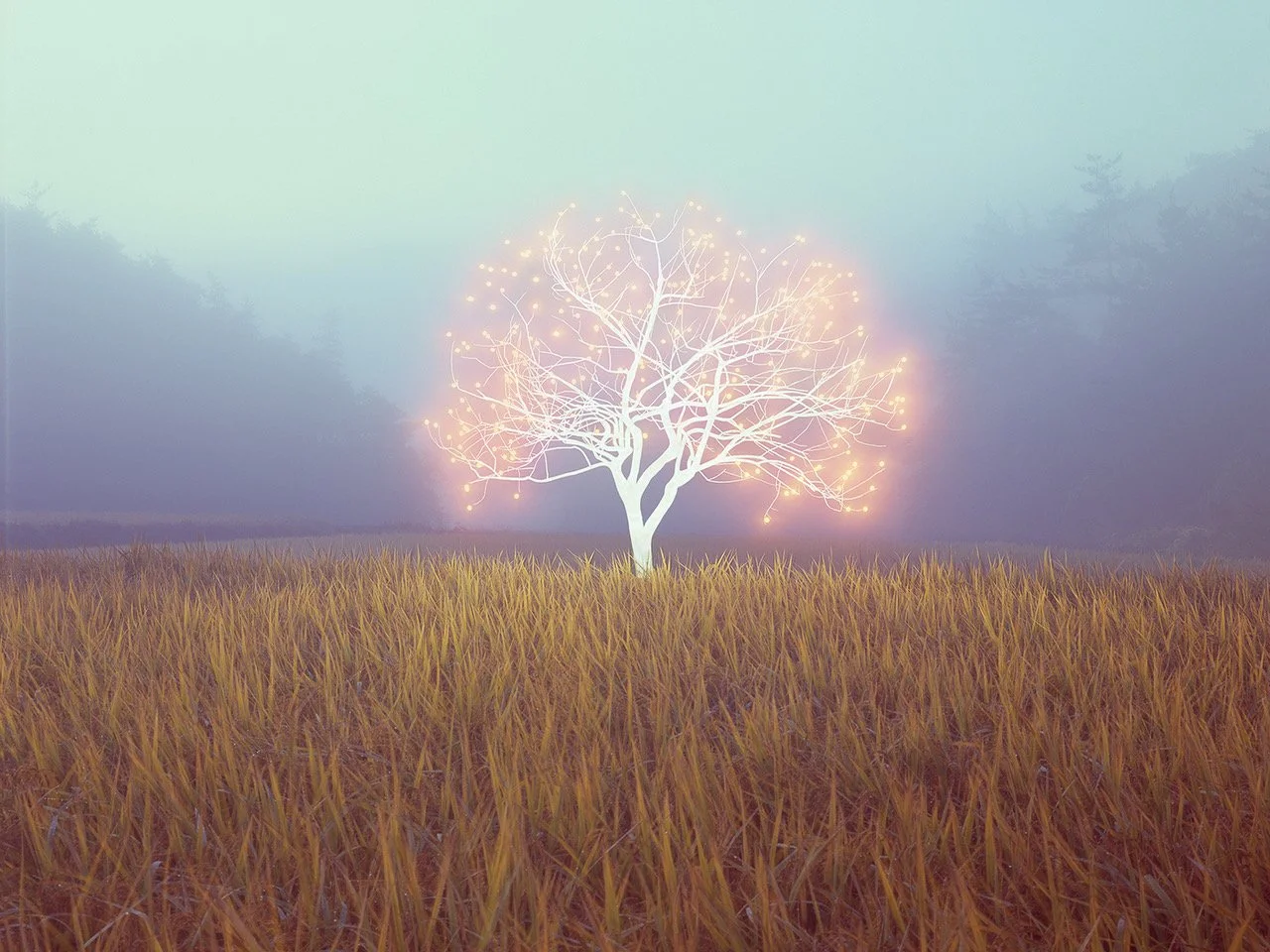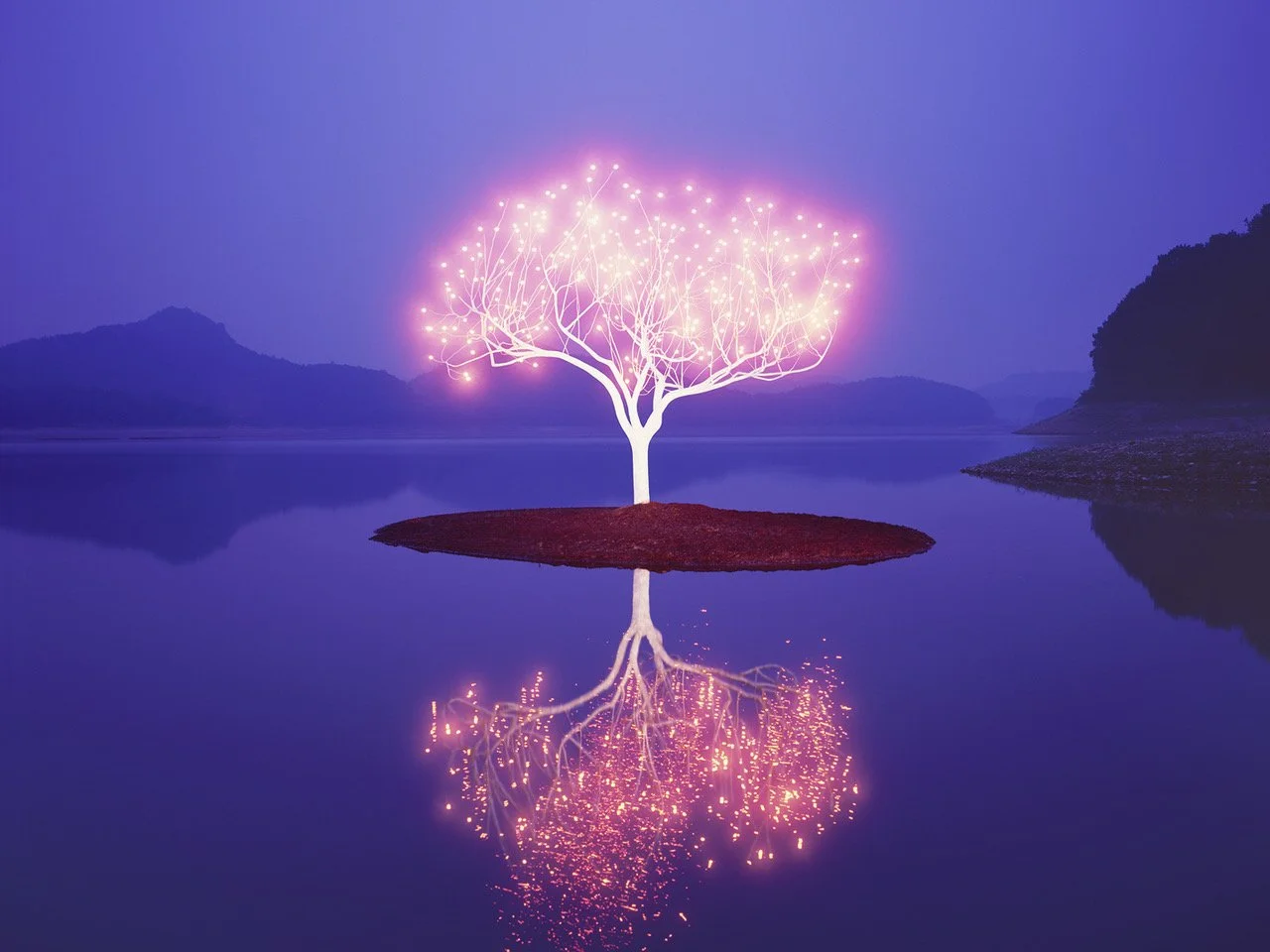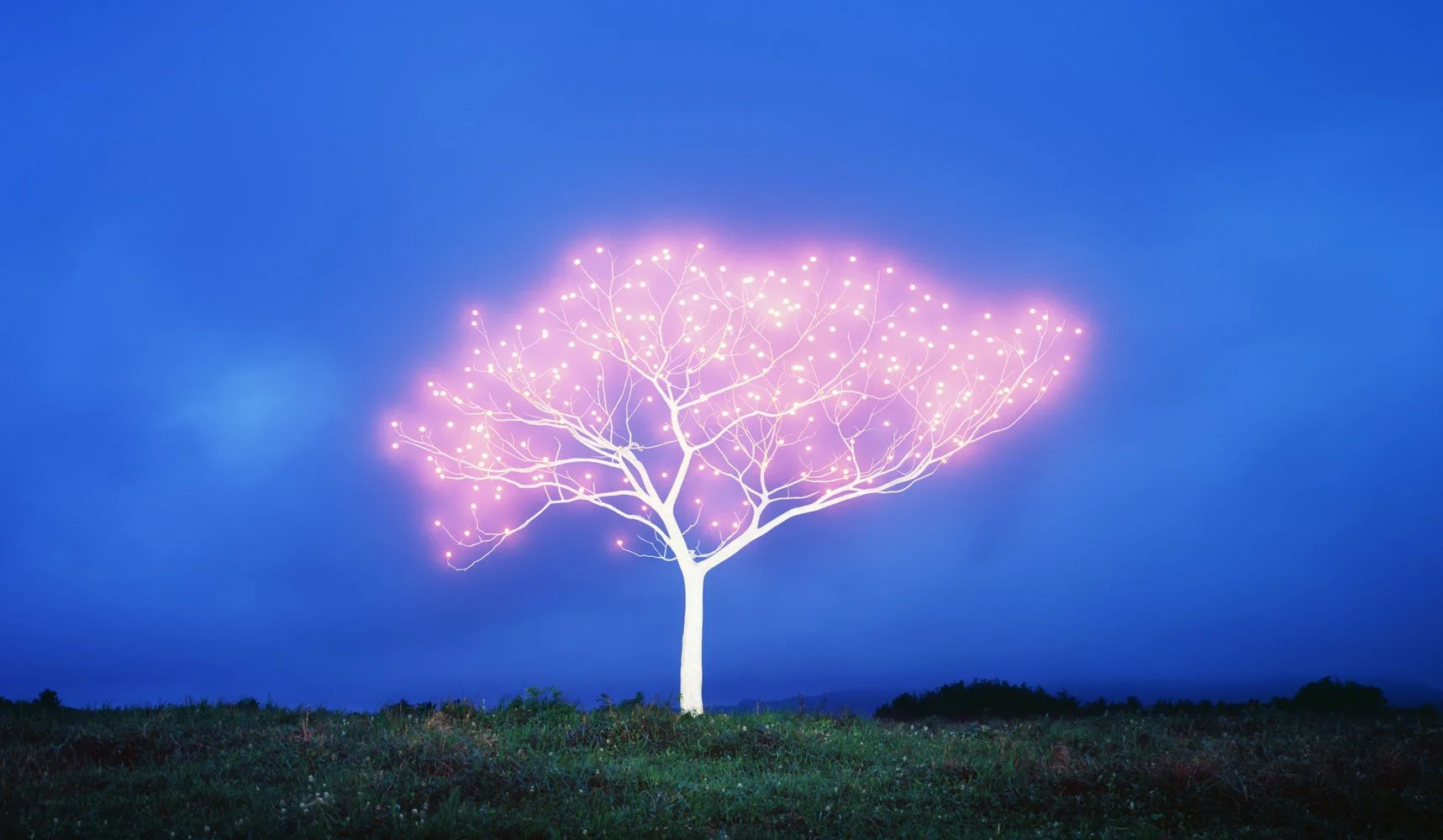Lee Jeong Lok
Korean born and based; Lee Jeong Lok studied at the Rochester Institute of Technology in Western New York where he earned his MFA in Photography. Lok exhibits extensively internationally, and his work is held in numerous public collections most notably the Daelim Museum of Art and the Ilmin Museum of Art both in Seoul, Korea.
The awareness of something that exists despite its invisibility and how the invisible interacts with the visible world has been the primary focus of the artist’s work since 2006. Through a series of experiments Lok began to use light as the medium to express dormant vitality believing that the sublimity of light is a universal archetype of mankind, and that light stands for the communions between the visible and invisible worlds. His work began from there and took over four years to develop his light painting process and to learn how to control the light for Trees of Life series of work. Lok combines light from natural light, flashlight and searchlight with other props (like smoke) and five different types of film (4x5 large format) with two cameras. Lok’s imagery is designed to prove the existence of a supreme power and to “express a spiritual feeling or imagination for a certain place or object rather than reproduce a particular landscape” to arouse a religious reverence in silent, desolate landscapes.
Working on JeJu Island with its extremely vibrant, near fearsome primordial nature with capricious winds and unpredictable weather the tree of life emerged. The tree of life symbolizing the interaction between two disparate worlds and a contemplation of our industrialized contemporary society overwhelmed with stimulations and incognizant to fundamental life sources. Lok asserts that artists must carve their way as a counterattack to lead us to a new world via contemplation of the images produced through their delicate observations. The “Tree of Life’ photographs are not landscapes that remain at the contemplation of nature, but rather landscapes that expresses an incorrupt source, nature as a reaction counter to the rebound of city, an age of urbanization and mechanization. The “Nabi” photographs the artist used light in symbolic form, the butterfly which symbolized being or a spirit moving from this world to the other and light to signify a gate or a messenger linking the two worlds. Nabi means prophet in Hebrew, the sphere shape stems from the original form and order of the universe.

















